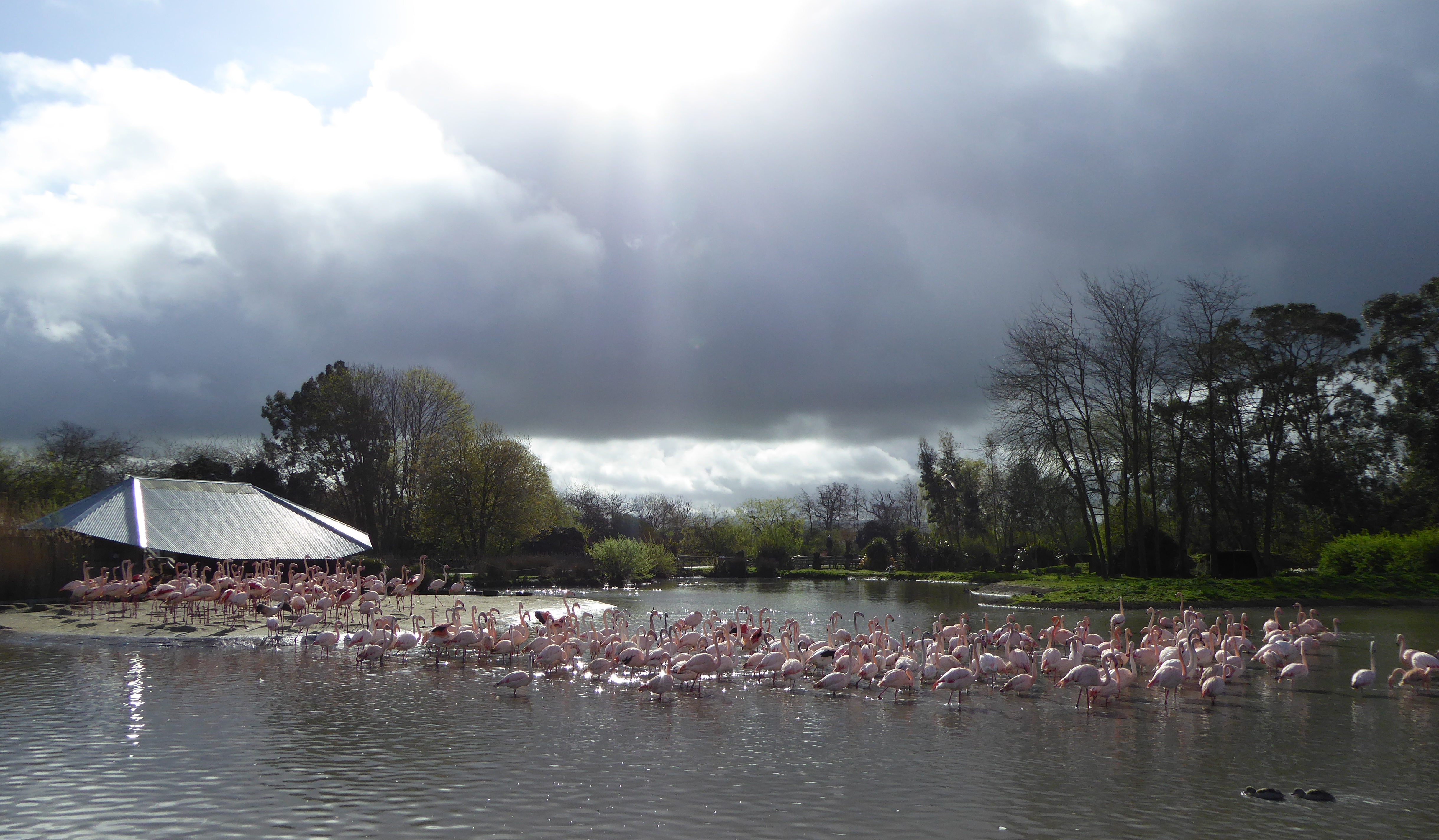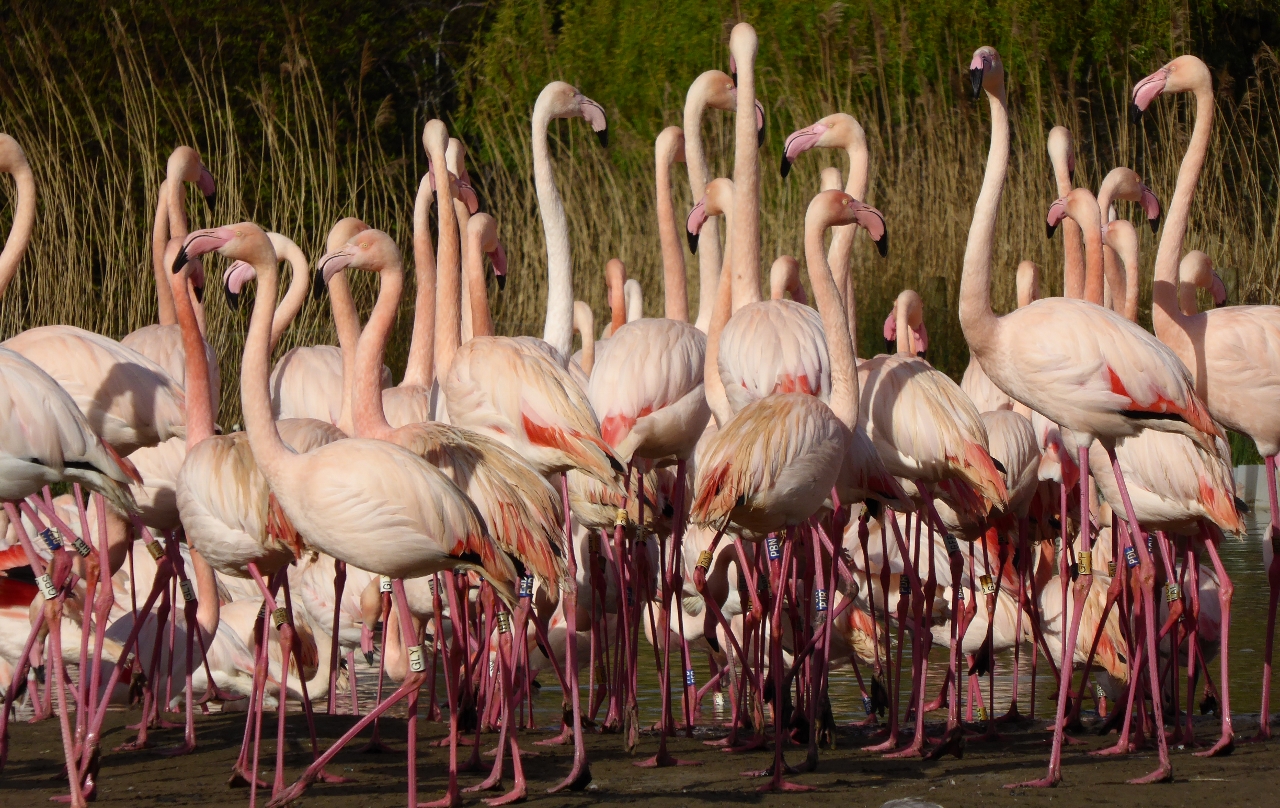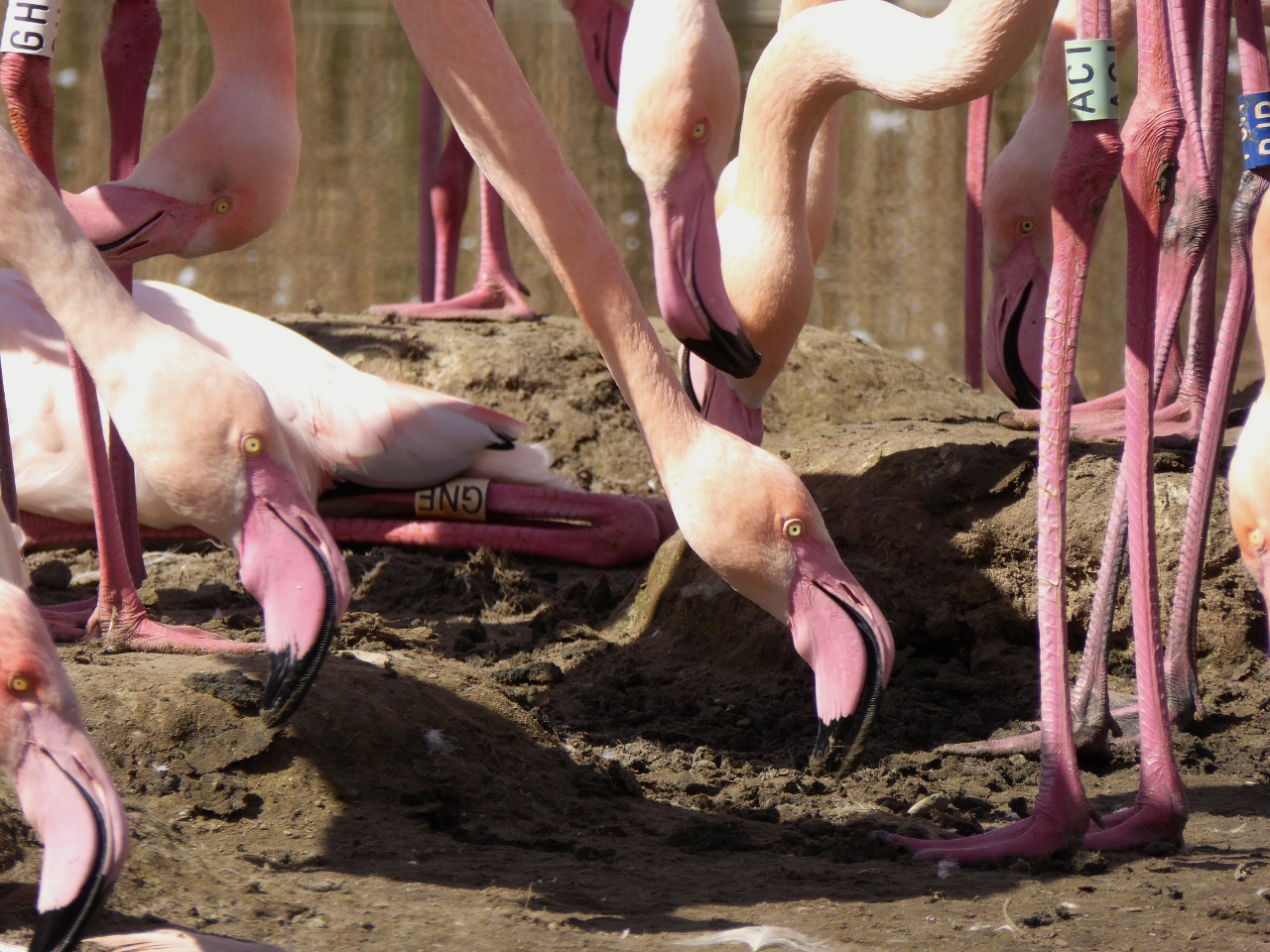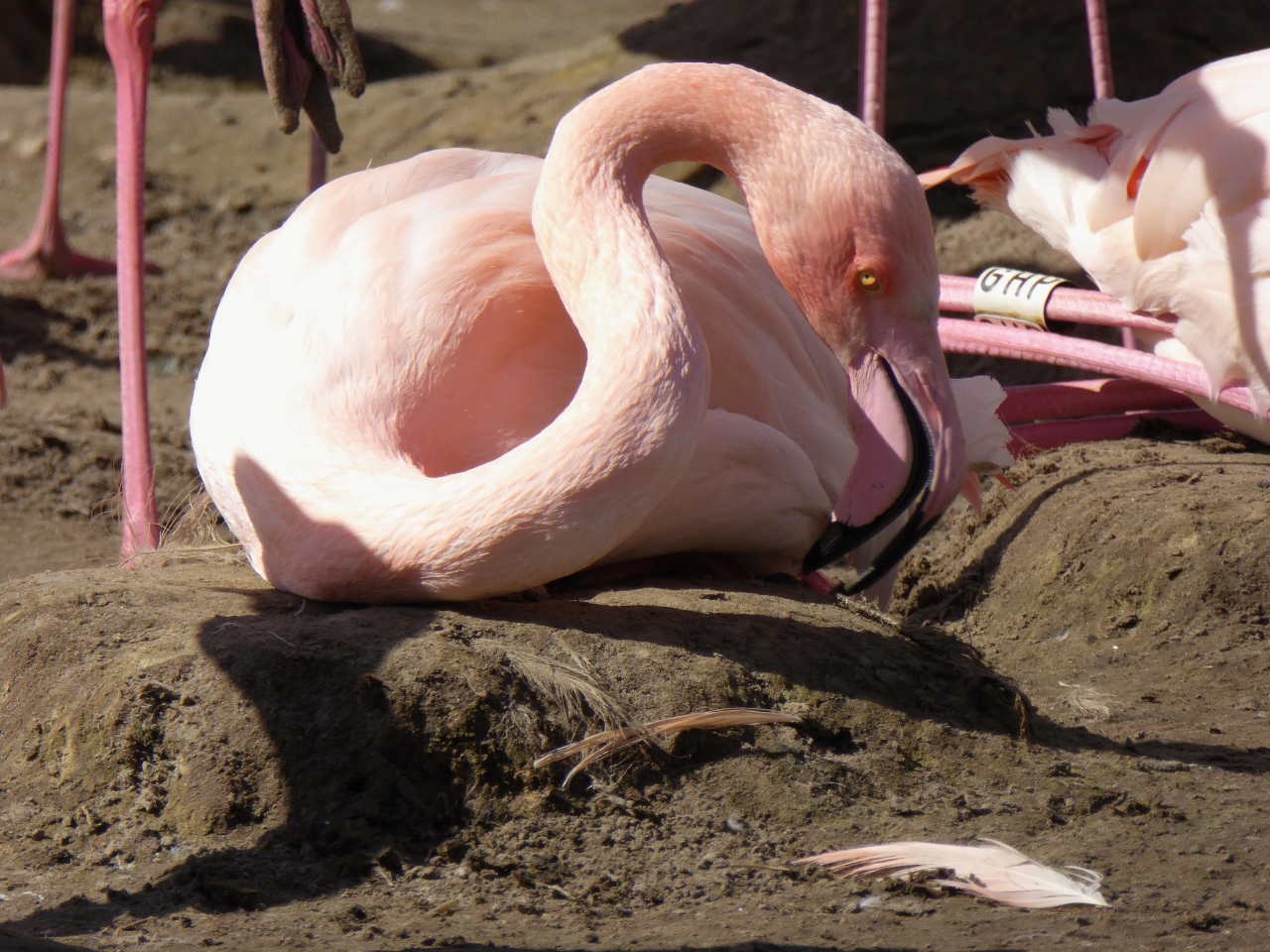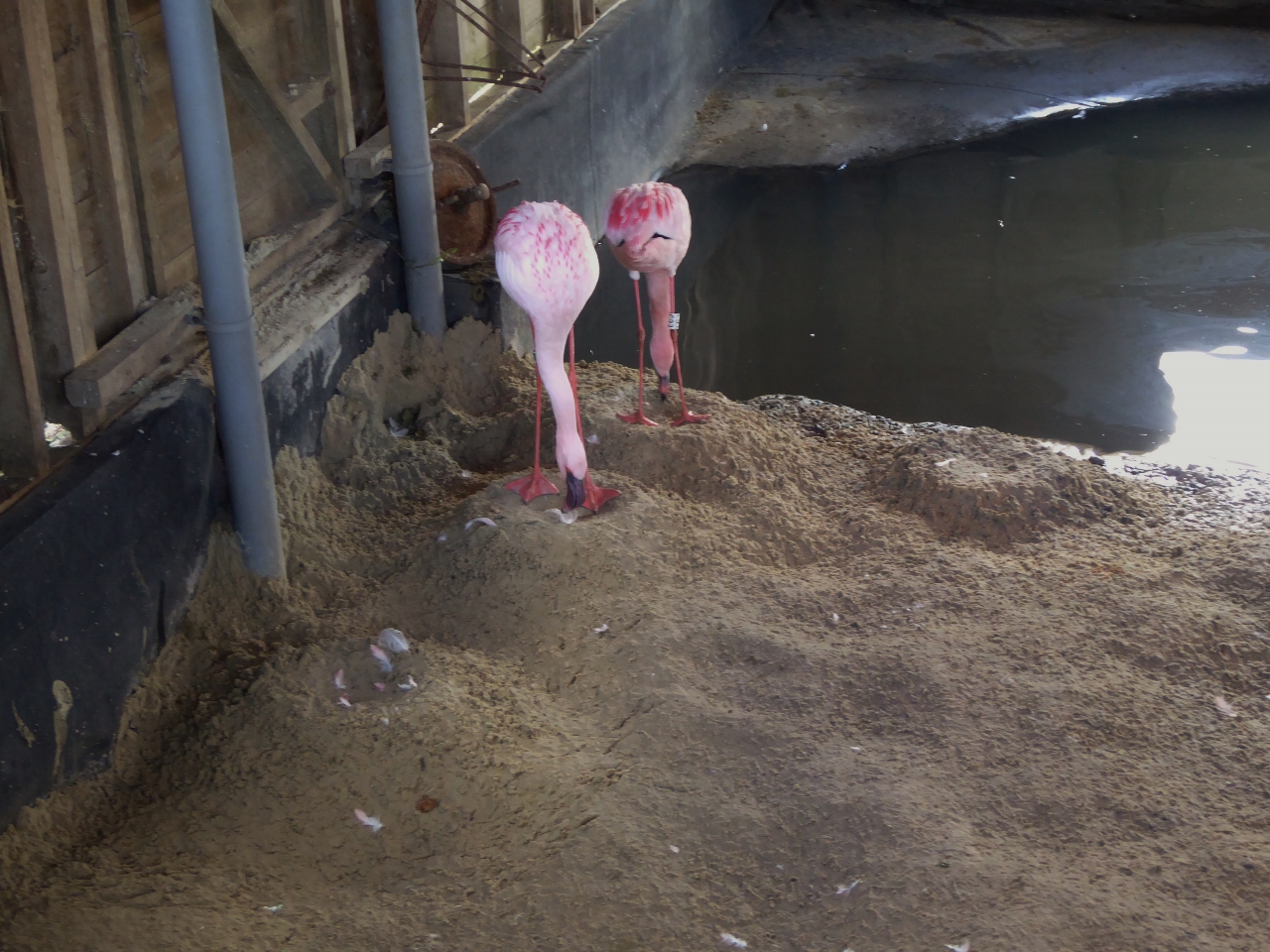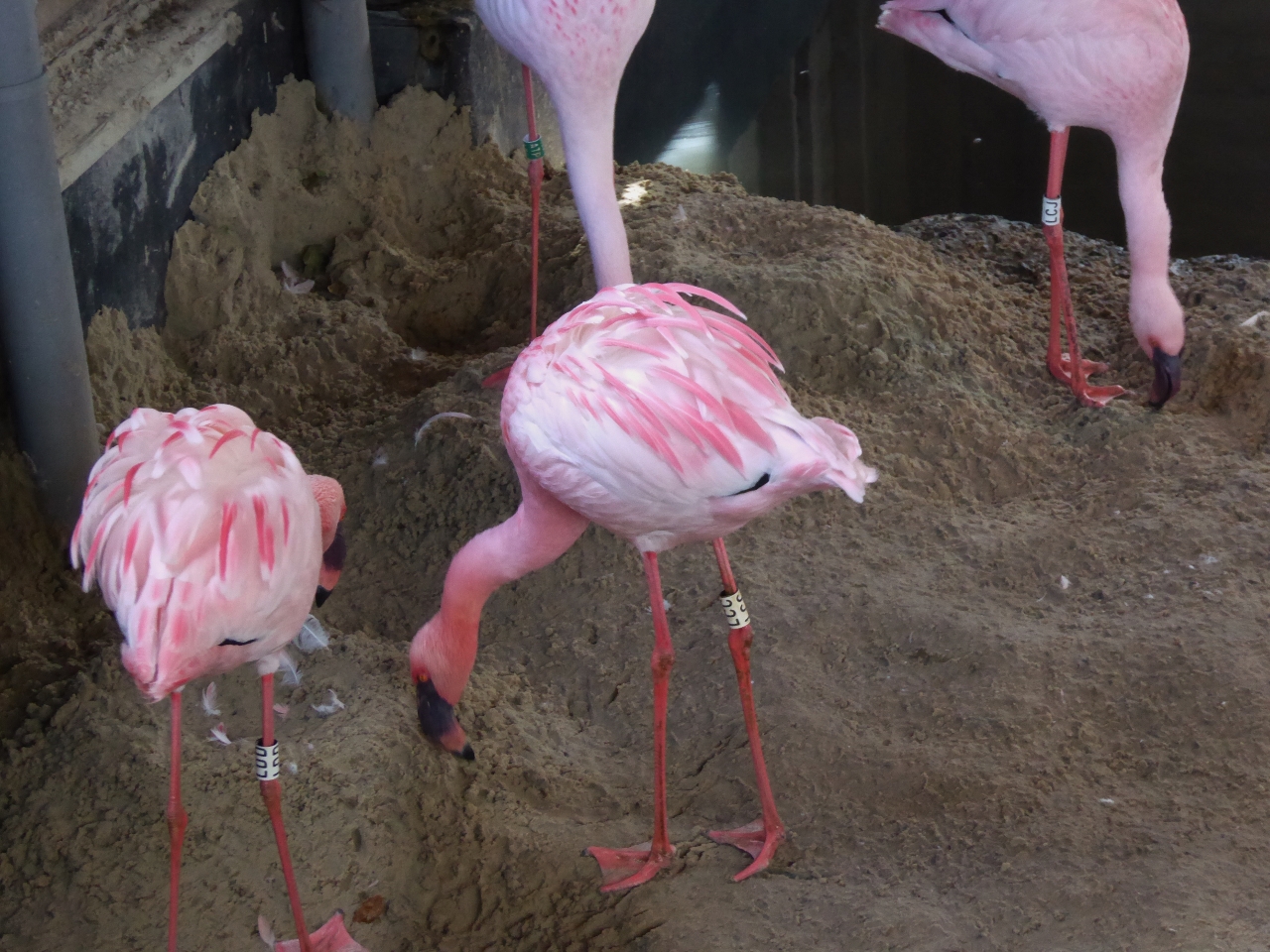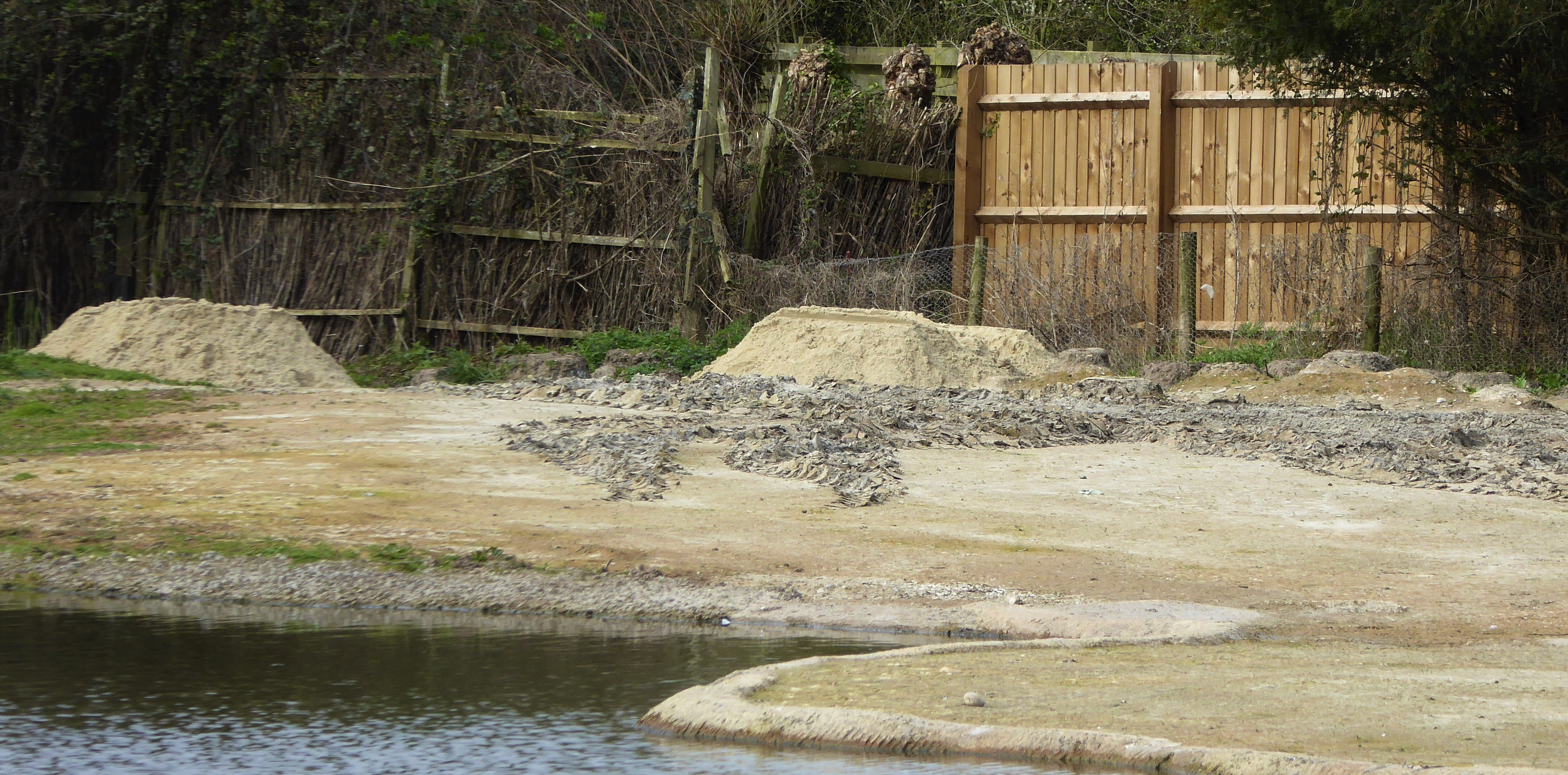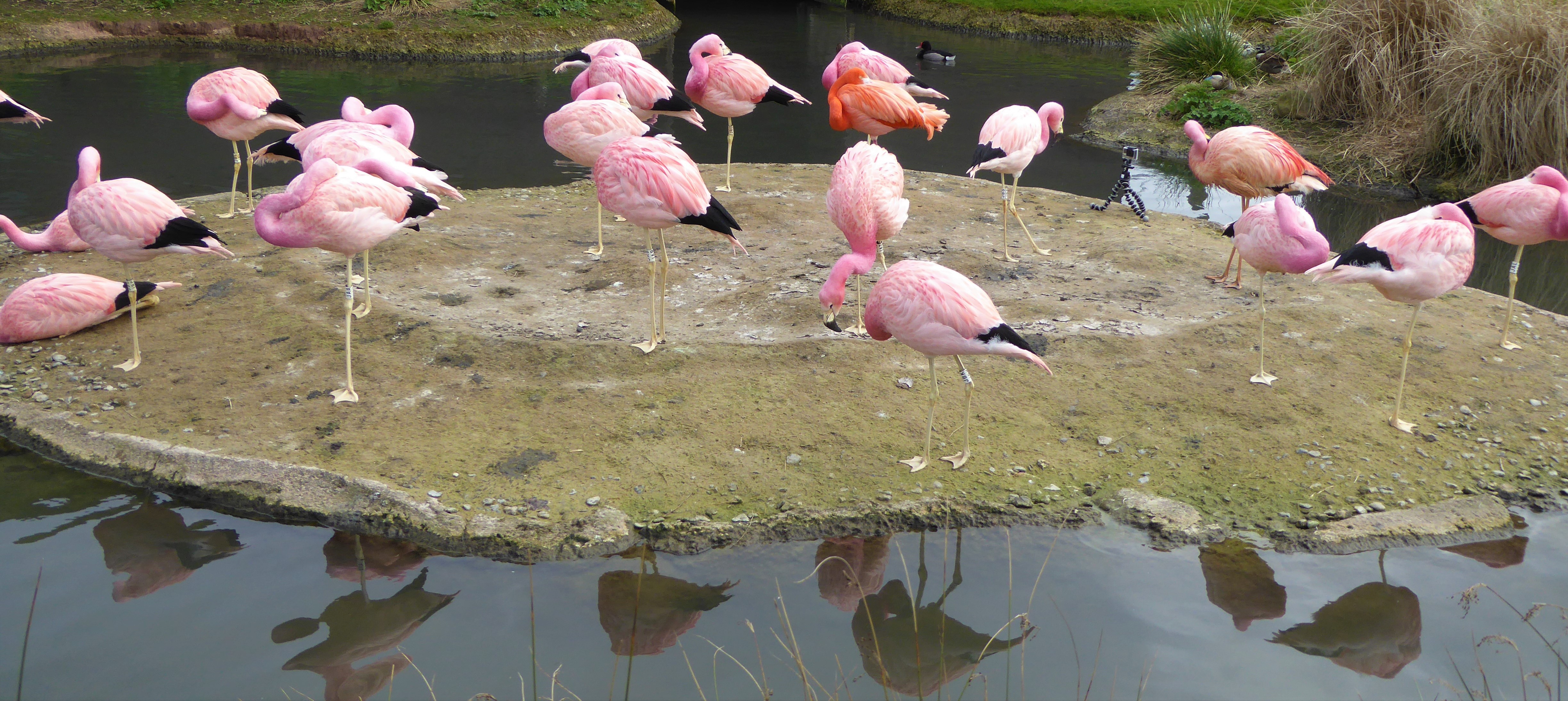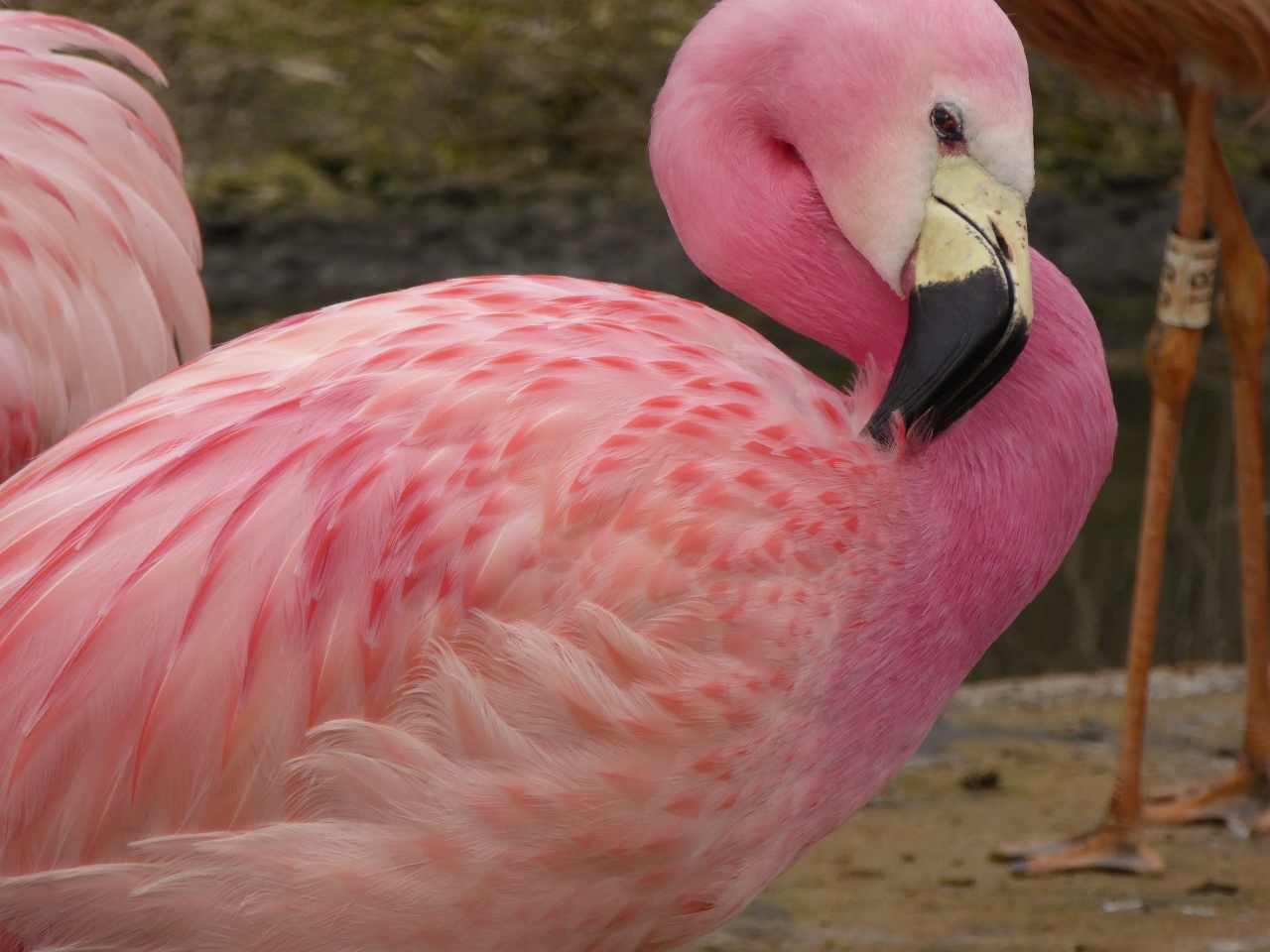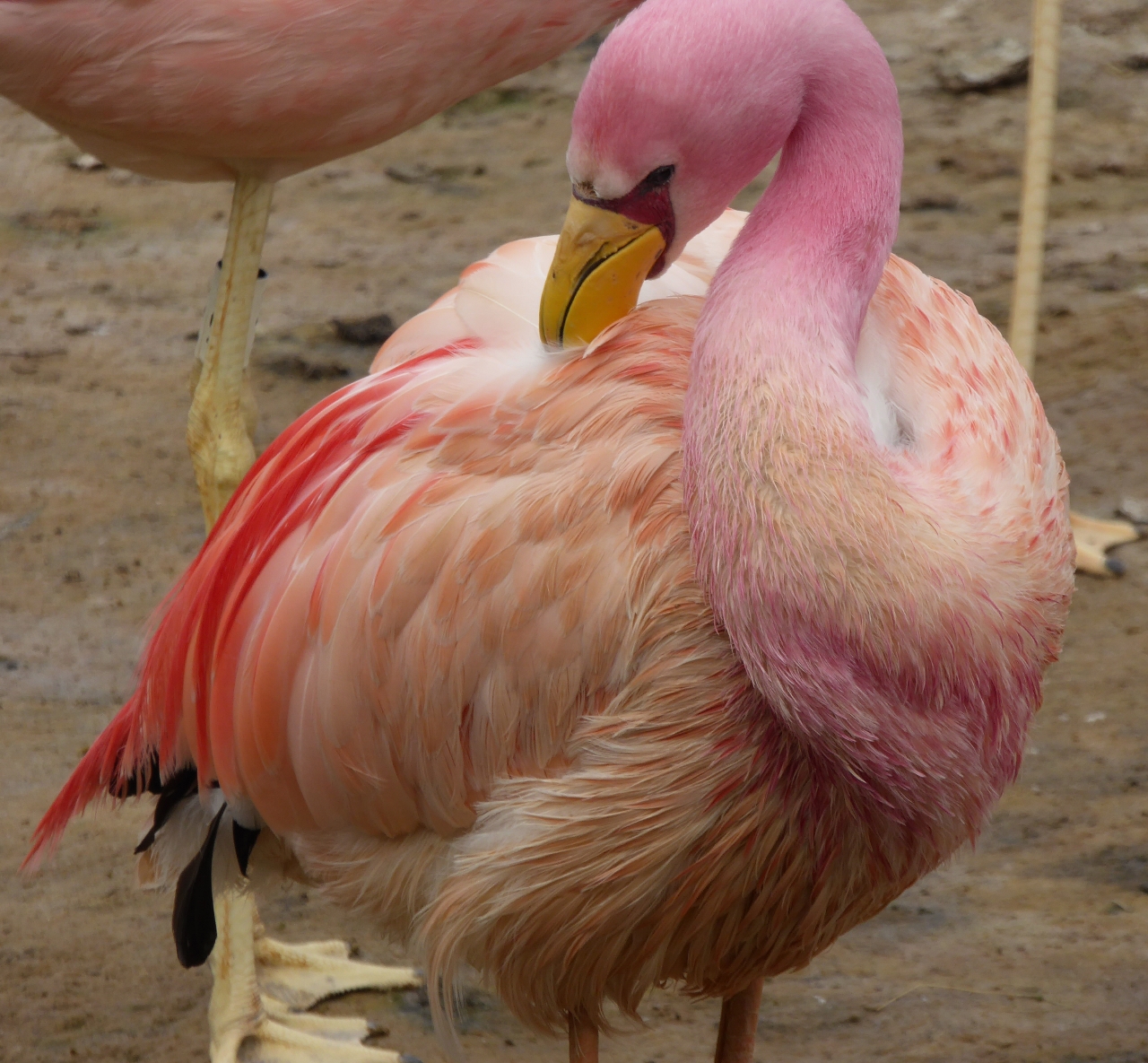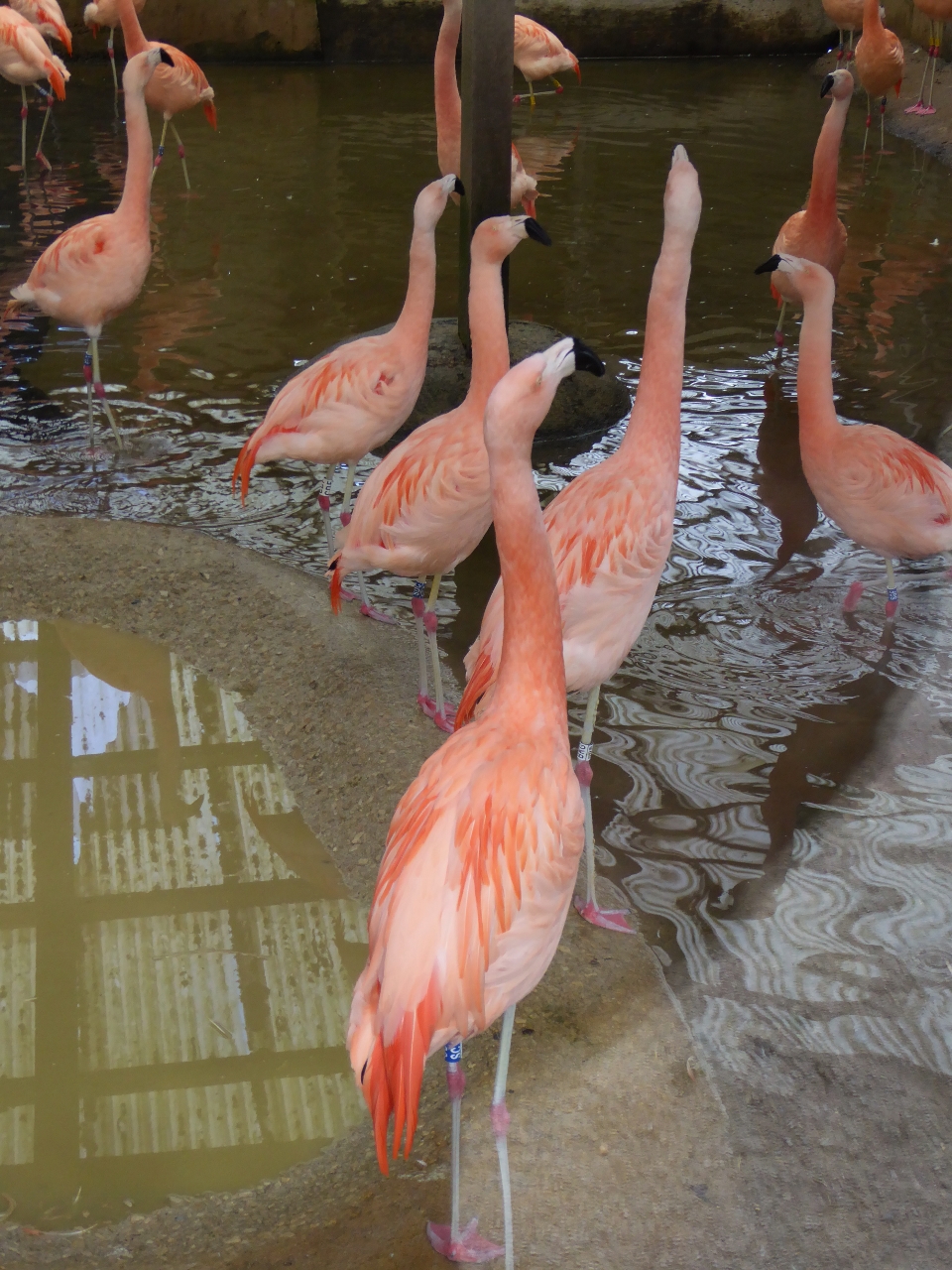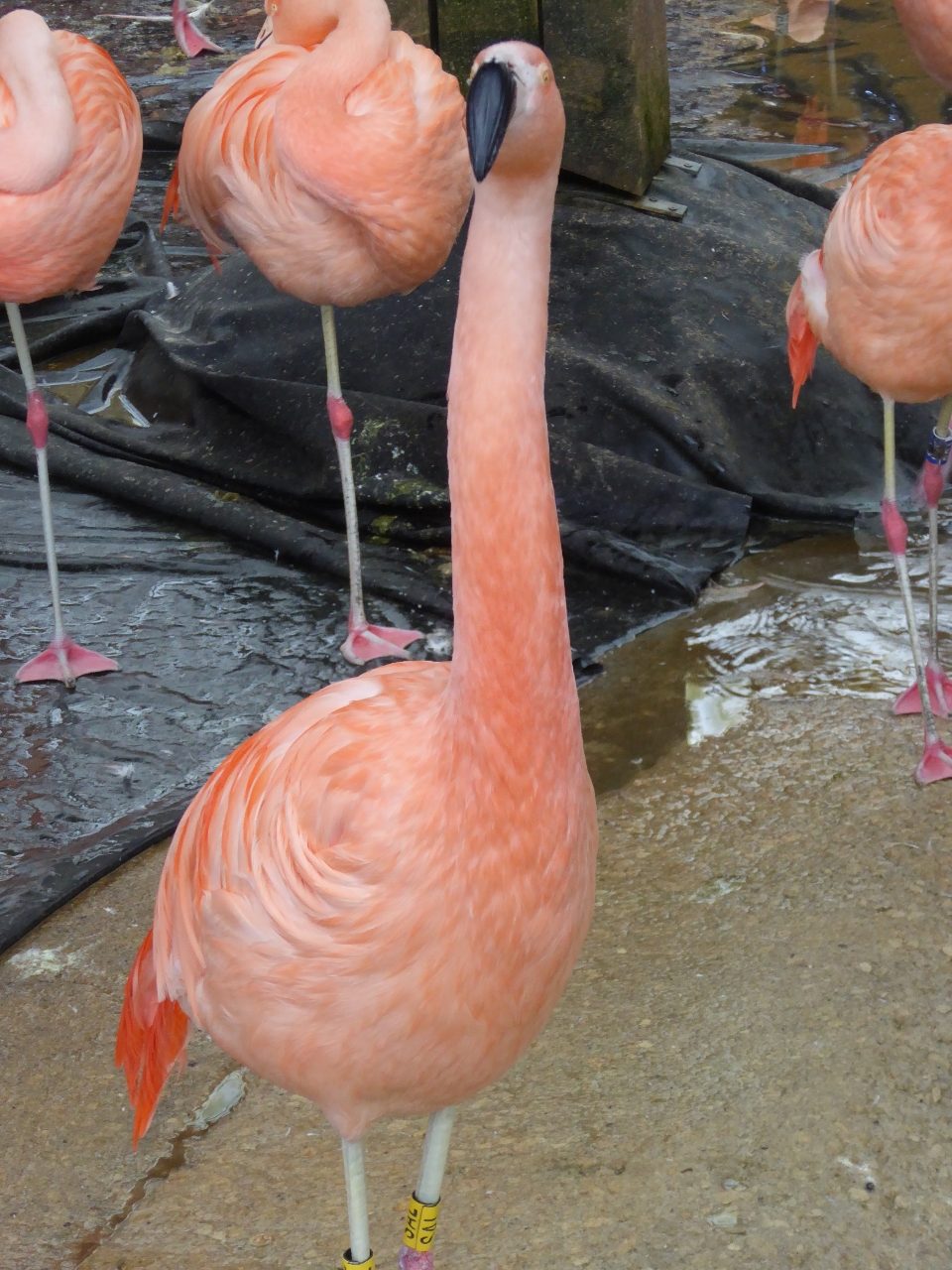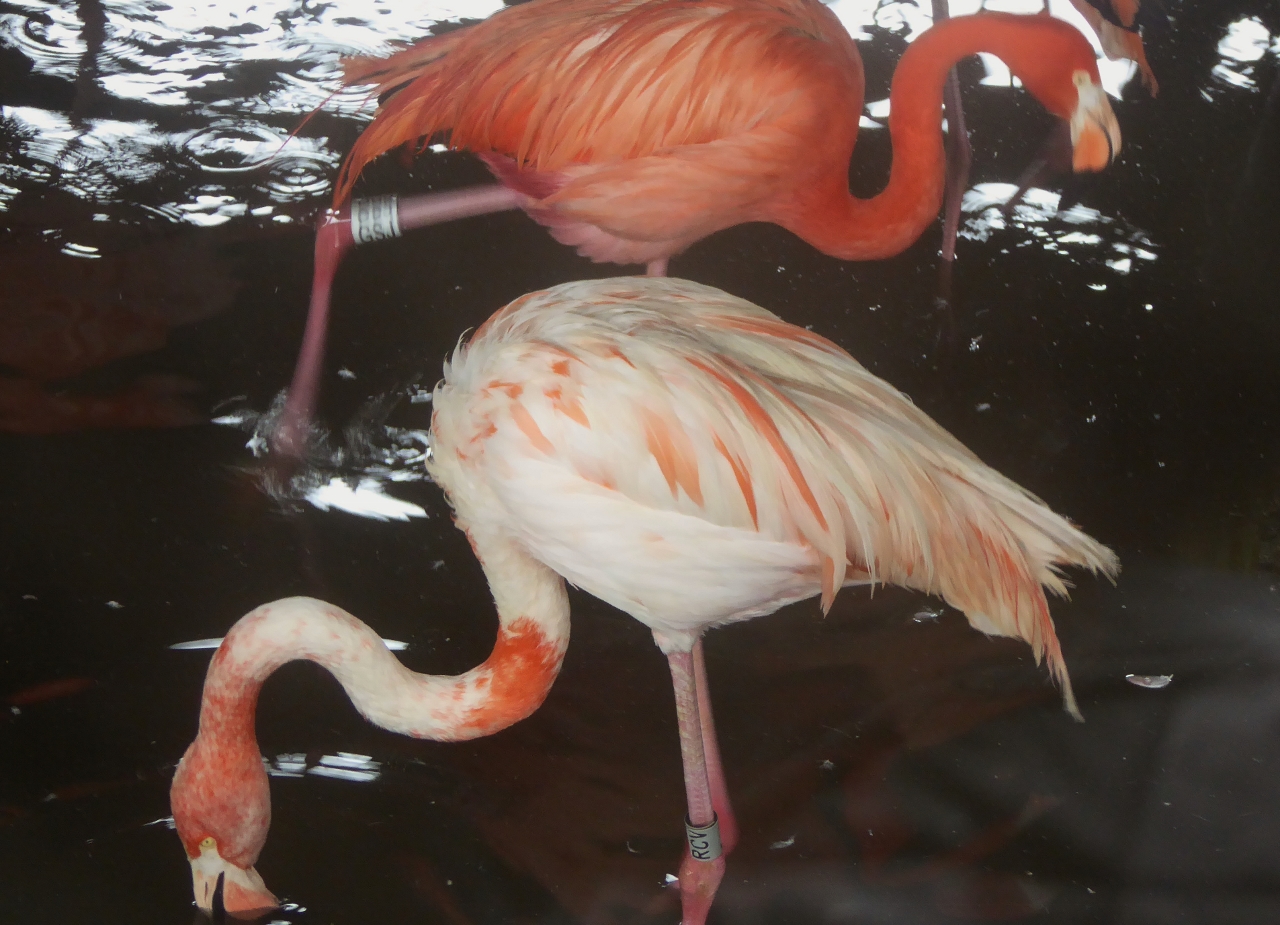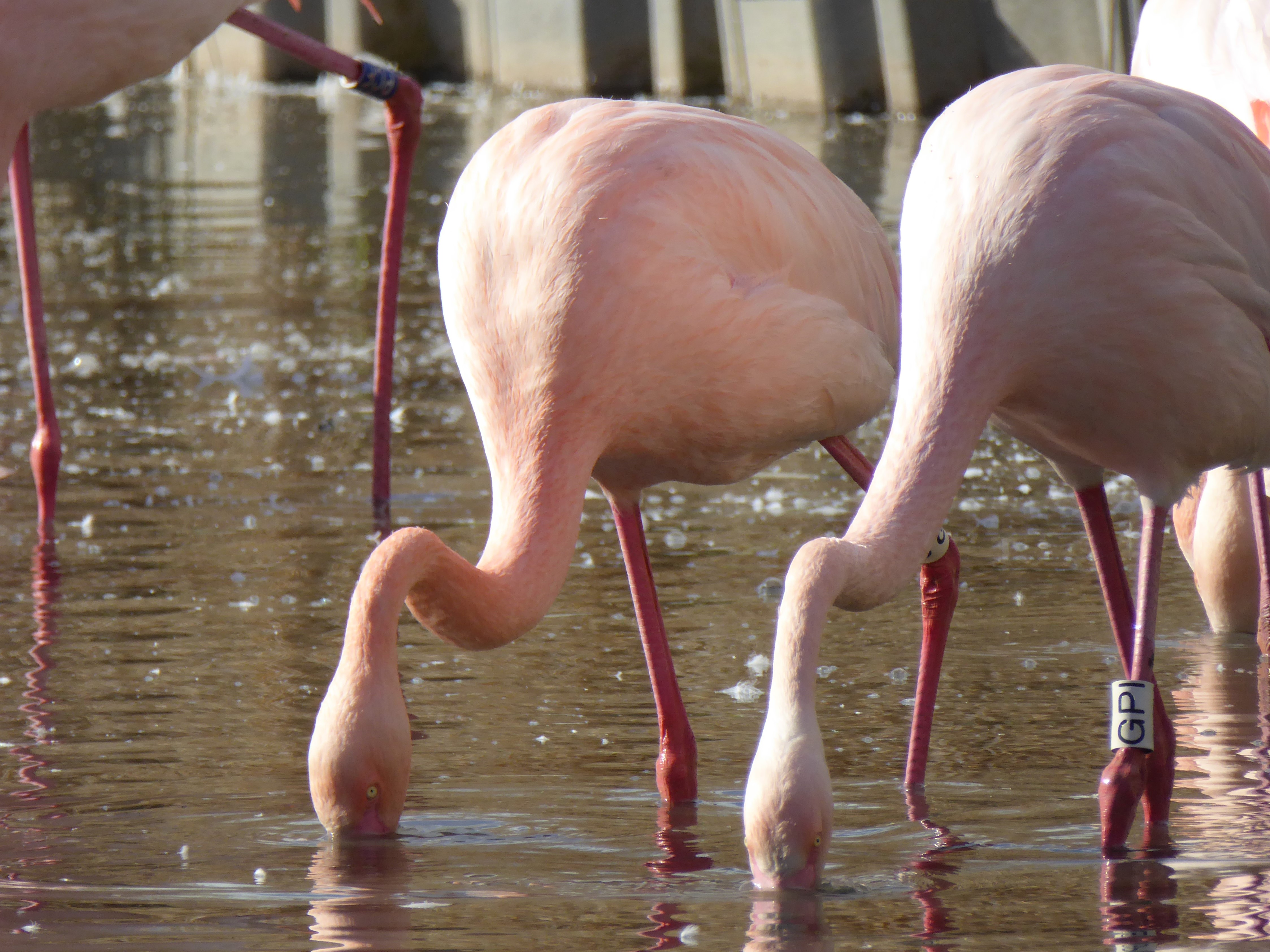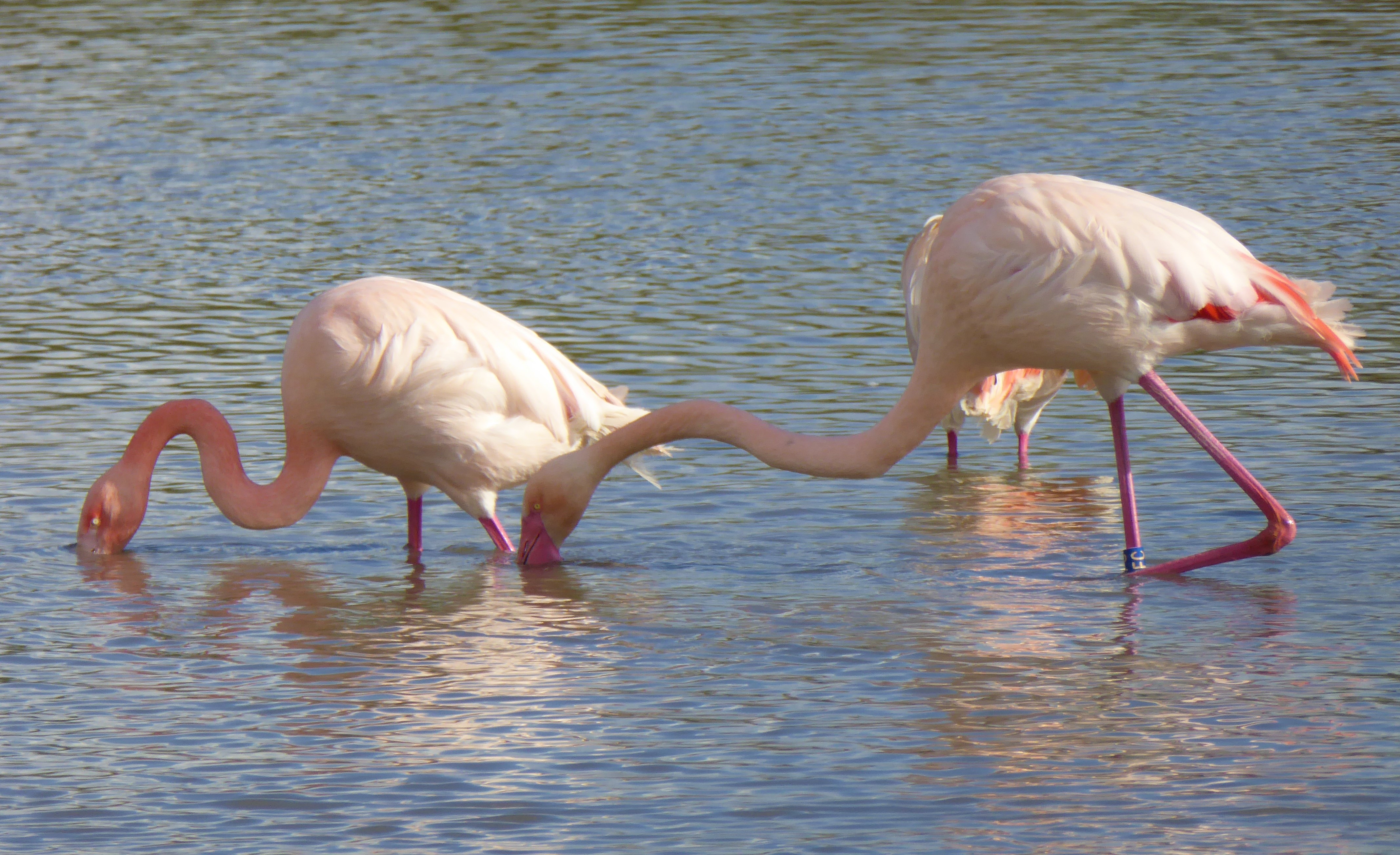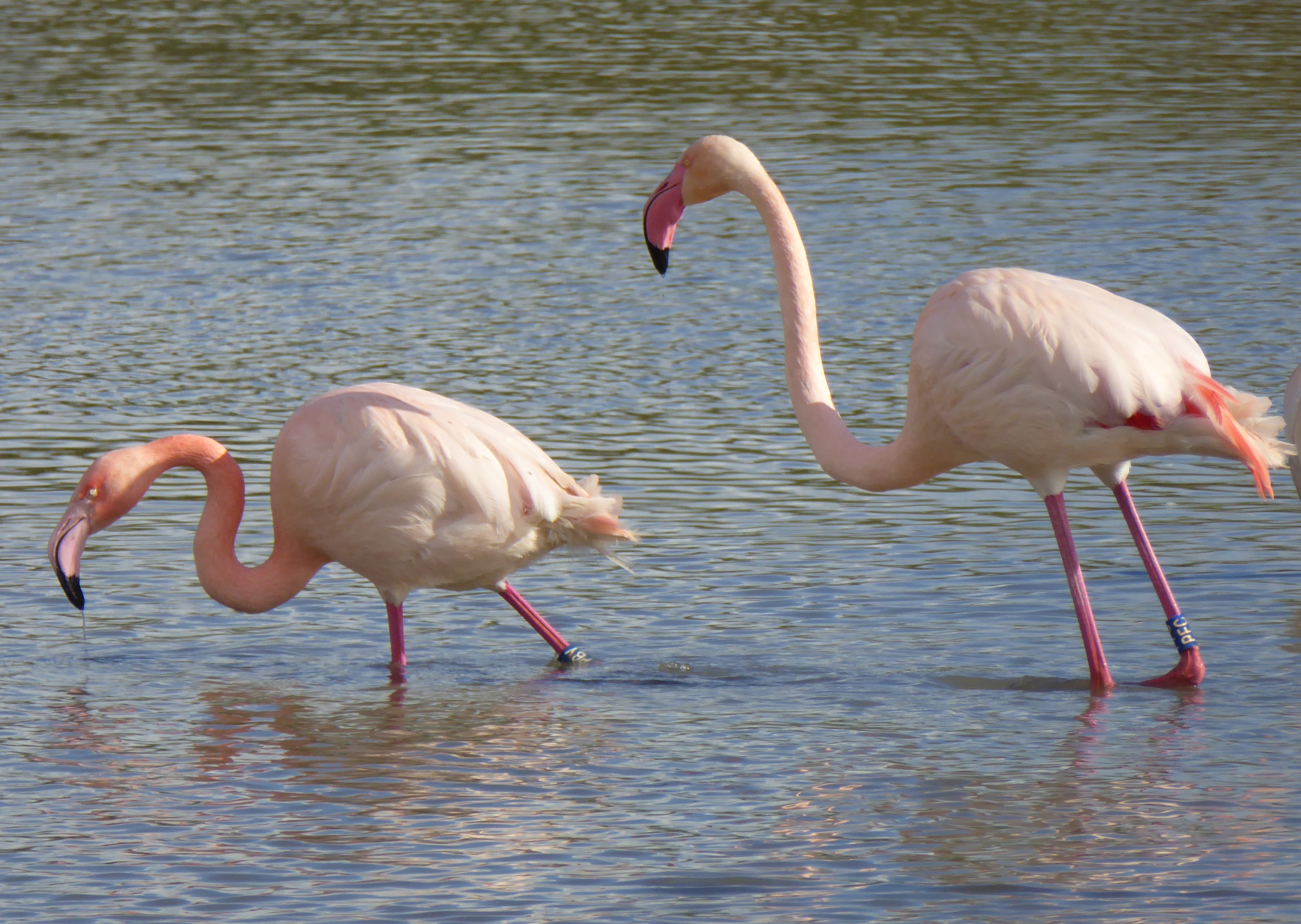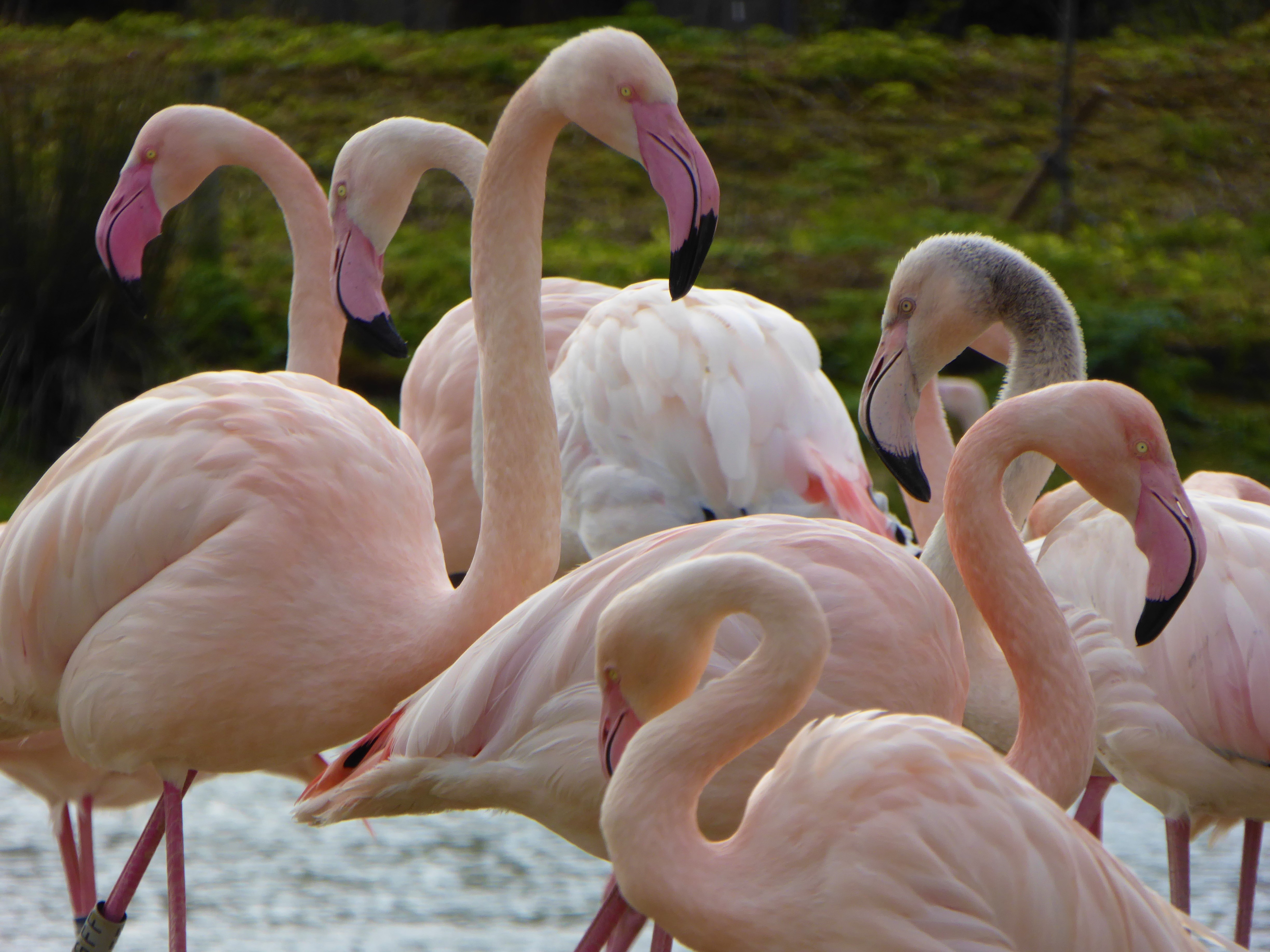The flamingos are back!
It's a very special time of the year for those of you interested in the WWT flamingos and that like to hear all about them, and what they get up to. After the recent weeks of having to keep the birds safe in their houses, several flamingo flocks are now out and about and enjoying the April sunshine (long may it last). So here is a short, picture-filled update of fun flamingo frolics at WWT Slimbridge that you can now enjoy over the Easter holidays.
The first flock to re-emerge into their enclosure was the greater flamingo flock that live in Flamingo Lagoon. These handsome birds truly enjoyed the beautiful weather at the very start of April, and within a few hours of being reacquainted with their outdoor space were delighting everyone at WWT Slimbridge by building a whole heap of nests right at the front of their island.
All of these flamingos milling around early on Saturday morning... a sure sign of courtship display. Lots of head-flagging and birds starting to join in group dancing. And look at all of the pink! The spell inside has not upset their application of their make-up at all :-)
And then it really starts... several pairs started to form up (see at the end of this post for how to spot that) and before long, nests sprung up incredibly quickly. Having first seen the birds at around 9am in the morning, it was amazing to see decent-sized nest mounds already built and being claimed by pairs of flamingos at 12noon on the same day. Is this the speediest nest building in WWT flaming history? It may well be!
A vivid pink female greater flamingo stakes claim to a partially-complete nest. The mound will increase in size and shape as building gets more and more intense. For those regular WWT visitors, start to keep an eye out for the first eggs appearing.
Not to be outdone by their larger cousins, the lesser flamingos have also been busy. It is hoped that these birds will be out into their enclosure in the next few days, but in the meantime they are putting on a great show inside their house. The estuary sand that flamingo avic Phil has provided for them has been to the birds' taste and several solid and well-shaped nest mounds can now be seen. This is definitely something to go and have a (quiet and move slowly) peek at if you are passing by the lesser flamingo house.
LDD and LCC are long-term partners. This threatening spreading of their feathers is a sign to the other birds that they want to take ownership of this mound. The bird with the green ring in the background is one of the new lesser flamingos from 2014, and along with its four other companions (all identified by coloured rings) is instrumental in starting off the courtship dance in this flock.
In preparation for the Caribbean flamingos to start nesting, their enclosure is being spruced-up. As is the case each summer, all of the flamingo pens receive large piles of high-quality sand. Good for building sturdy nests and for keeping chicks clean and dry. Here you can see these large piles of sand at the back of the Caribbean Flamingo Pen ready for Phil and his colleagues to lovingly mould into the perfect nesting area for the birds.
With all of these thoughts of breeding and bird welfare to hand, it is important to get the closest view into each of the flamingo flocks. If you look closely in the photo above, near to the James' flamingo on the right-hand-side, you can see a go-pro camera on its tripod on the floor. Phil is placing this camera in each flock in turn, to see what the birds are up to when they start to nest. As befitting their calm and gentle nature, the Andean flamingos have been the least bothered by this new piece of equipment and don't even seem to realise that it is there! Maybe because they were too busy making themselves look as beautiful as possible...
And don't they look stunning! It was really nice to hear the comments of visitors to Slimbridge today- the "wow" factor that the Andean flamingos generated was evident in all that passed their way. Several weeks inside has not made them go off-colour at all.
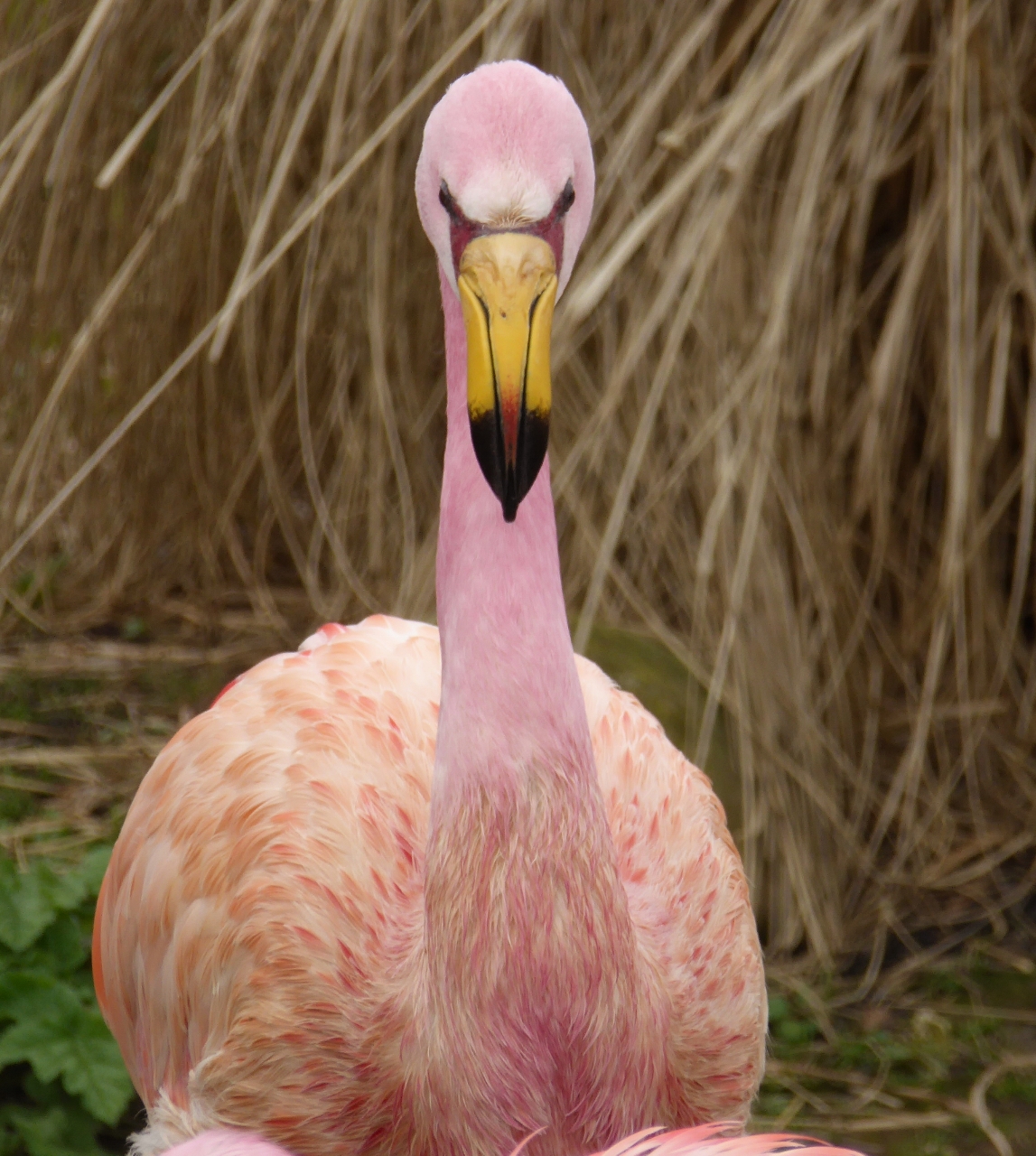
Mr James too is in his finest. That yellow beak is stunning. His trademark characteristic, the best way to spot him in the flock is to try and find the banana-yellow bill. His bright orange legs have also made another appearance this spring, as well as long, drooping scapular feathers, in vivid scarlet, over his back.
Colour is an important feature of the Chilean flamingo flock too. And these birds are also looking spectacular. There is a deep salmon pink to this flock. They are head-flagging and wing-saluting tirelessly all day. You can see the range of pinks and oranges that have developed in these birds in the photos below.
This very deep, dusky pink is a real feature of the Chilean flamingo. Carotenoids, these orange and pink colours, also build up in their skin too. And the famous pink "knees" (actually ankles) of the Chilean flamingos are also looking very, very bright.
But what about birds that seem to be taking some time out and not joining in with the sudden change in wardrobe? Looking closely in the Caribbean flamingo flock you will be able to spot some birds that look like they are potentially in a contest for "worst impression of a Dalmatian dog award 2017". These are parent flamingos from last year, which are only now starting to grow back their familiar bright orange feathers. They have a patchwork appearance of white and orange, which might look weird to us but serves an important purpose. It tells the other birds in the flock that they are not quite ready for breeding yet, so please give me some peace and quiet, thank you very much :-)
And finally, for those more keen-eyed flamingo lovers / animal behaviour spotters; when you have looked at the colour and the dancing, how can you tell which pairs have fallen in love? This is very subtle, but lots of pair formation is going on with the greater flamingos right now. The photos below will give you a clue as to what to try and see.
Mirroring- two birds doing the same thing together, side-by-side, at the same time. They are deeply in love.
Pair following- girl at the front, boy at the back. Notice how tall he is. Pairs like to follow each other around and stick close, to avoid confrontations with other, non-attached, birds. PS: the female bird above is astoundingly pink!
Mate-guarding- (in the middle of this photo) on the left a tall male walks close, touching, to the smaller female in front of him. He is being vigilant, whilst she makes her way through a throng of birds. Any challenges or attempts to "give her the eye", then her husband will dive in to defend her honour.
